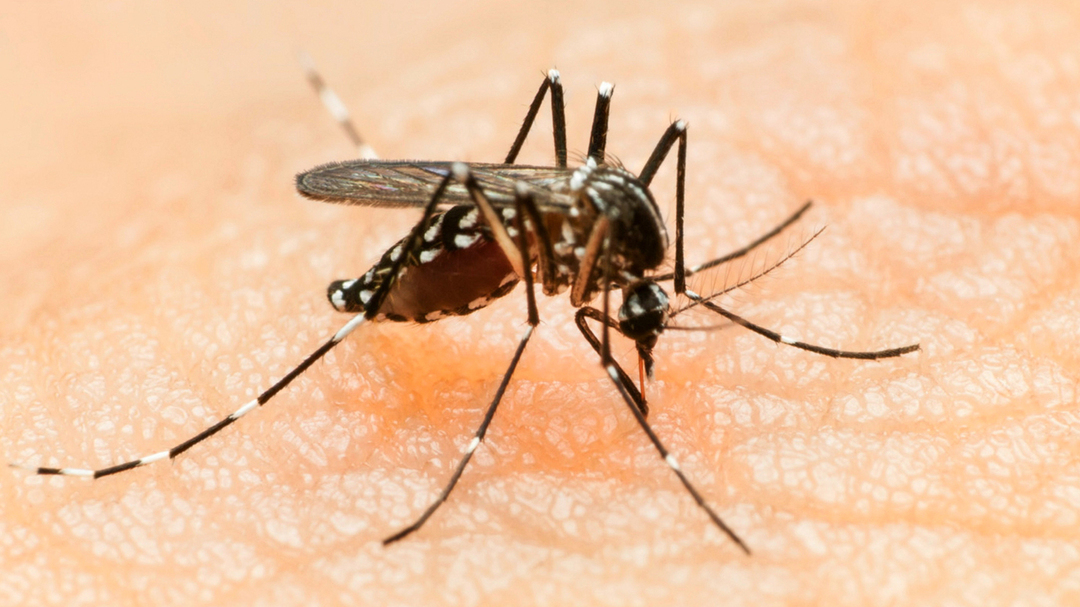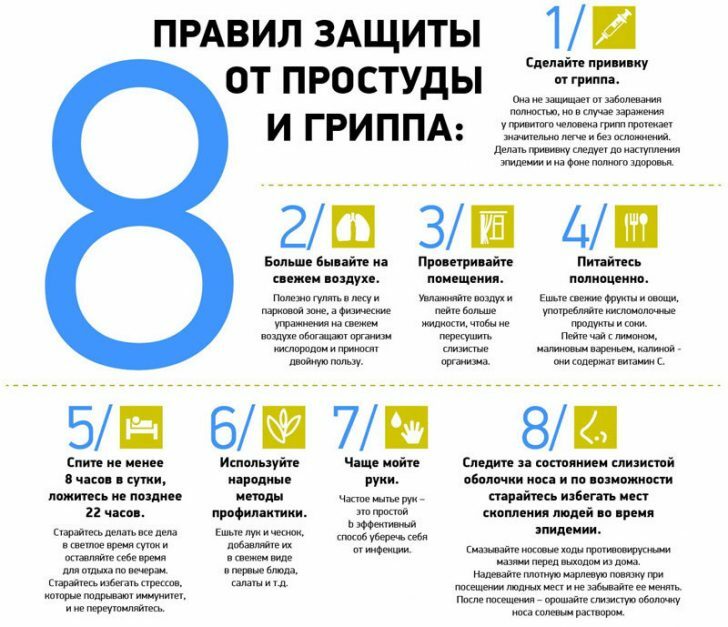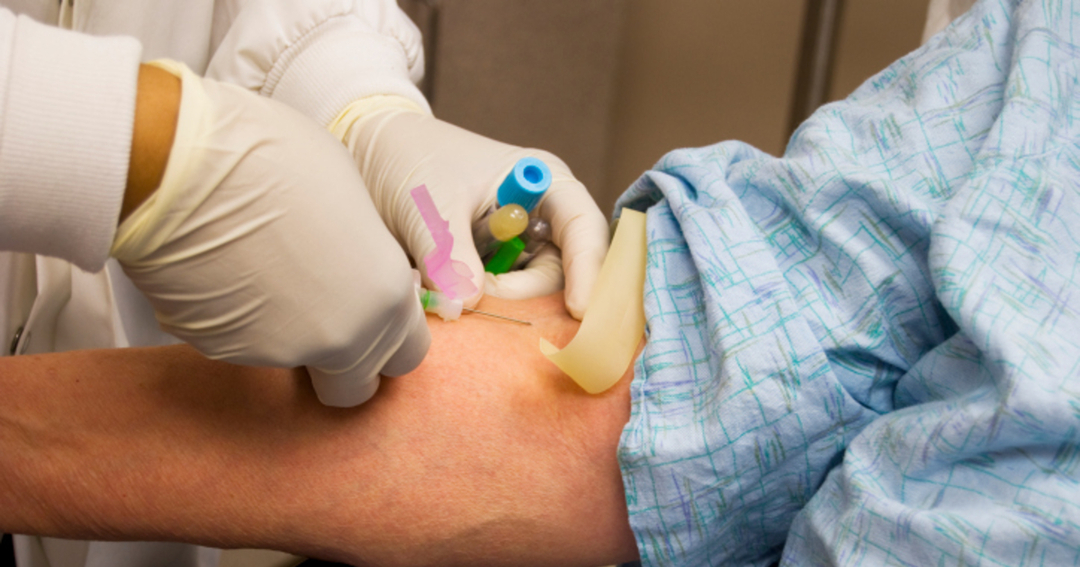Foot and mouth disease in humans: how infection occurs, symptoms, prevention, treatment
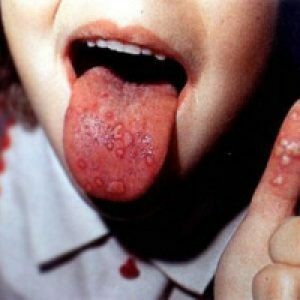
Foot and mouth disease is a dangerous virus disease, which is extremely difficult to tolerate.Most often it is diagnosed in domestic animals, however, in case of favorable conditions, an FMD pathogen can affect a person.The disease is widespread in regions where people are actively engaged in agriculture.
Table of contents: General information What causes and ways of infection with foot and mouth disease? Clinical picture and symptoms of the disease Diagnosis Treatment Prevention of foot and mouth diseaseGeneral information
An acute zoonotic infection that is transmitted by the fecal-oral route.In this case, the person is affected by the mucous membranes and skin in the brush area.All this is accompanied by fever and intoxication.
Science has been known for more than 400 years, although its causative agent was discovered only in 1897 by Lefler and Frotem.
They noticed similar symptoms in animals, and people became interested in them.In both cases was noted:
- abundant salivation;
- aphthae, ulcers in the oral cavity;
- affection of the myocardium, skeletal muscles;
- in animals also suffered lesions of body parts devoid of wool.
Please note! A virus of the genus Afliviruses of the Picornovirus family is considered to be the causative agent of the disease.It belongs to the group of highly resistant, as it can withstand drying, disinfection.On pastures in mountainous regions can live 12 months, in drains, on clothes or on wool - 3 months, in sausage products - 3 months, in premises - 2 months, in milk at temperature about 15С degrees - 2 weeks, in frozen products -Years, presenting a huge danger to others.
Destroy the pathogen of foot and mouth disease only in solutions or with heating.It does not tolerate:
- hot 1% solution of Na and K, if placed in them for half an hour;
- 2% formalin solution if placed there for 10 minutes;
- 10% solution of peroxide.
In addition, the virus is unstable to ultraviolet rays.Thanks to modern medicine and preventive measures, people have become much less likely to get FMD, while livestock outbreaks are still fatal to this day.That is why all identified patients are killed to avoid new infections.In a matter of hours, the virus can hit hundreds of head of livestock.
Causes and ways of infection with foot and mouth disease
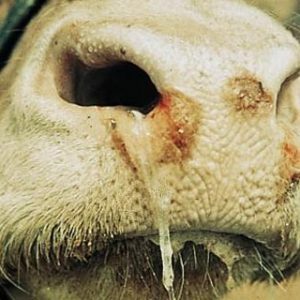 You can catch FMD only from animals by contacting them or by eating food contaminated with products.At risk are adults and children who regularly take care of cattle, sheep, pigs, goats, dogs, cats, horses, poultry, or get along with them.
You can catch FMD only from animals by contacting them or by eating food contaminated with products.At risk are adults and children who regularly take care of cattle, sheep, pigs, goats, dogs, cats, horses, poultry, or get along with them.
Important! The carriers of the disease are also rodents, mites, flies, camels.
Infection mechanism - contact, fecal-oral or contact-household .In other words, you can catch the disease by eating fresh dairy products, contacting with the nails of sick animals or with contaminated objects.These can be: litter, drinking bowls, water, manure, feed and even clothes of people caring for animals.
Please note! Animals can be infected by airborne droplets, and through open wounds.At the same time, the human foot and mouth disease virus is not transmitted.It is also known that adults are more resistant to it than children, in whose diet dairy products play a huge role.
Clinical picture and symptoms of the disease
The mucous and damaged skin of a person is the gateway of infection.Moreover, the pathogen initially enters the oral cavity and / or the upper respiratory tract.Here it multiplies, which can be evidenced by the bubbles that appeared in this area of the body.The incubation period lasts 3 to 8 days, after which the virus appears directly in the blood.
Important! During the incubation period, the disease may not manifest itself.Everything depends on the individual characteristics of the body.
Once the virus enters the blood, the following are noted:
- Secondary rashes.Most often they are located in the mouth, cheeks, tongue, nose, throat.
- Temperature rise up to 40C degrees, which indicates the onset of the septic stage of foot and mouth disease.
-
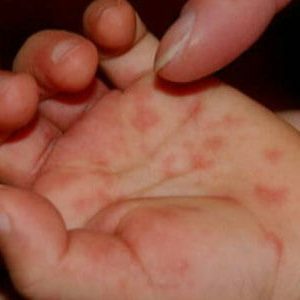 New bubbles between the fingers and around the nails.During this period, the virus, most likely, already affects the internal organs, standing out in the environment with feces, urine, bile and saliva.
New bubbles between the fingers and around the nails.During this period, the virus, most likely, already affects the internal organs, standing out in the environment with feces, urine, bile and saliva. - Weakness, increased heart rate.
- Chills, lowering of blood pressure, headache.
- Soreness and burning sensation of the mucous membranes of the mouth, nose and tongue, although it can also appear in the first days after infection.
- Muscle and lumbar pain.
- Abundant salivation.
- Swelling and hyperemia of the oral mucosa.
- In some cases, a slight upset stomach and rezi when urinating.
The first rashes that appear on the human body last for about 7 days, after which small lesions are formed in their place, which subsequently merge into one affected area. Often they are localized in the patient's language, preventing him from eating and talking.At the same time, lips are swollen, also covered with sores and crusts.
After the appearance of secondary rash( on hands), the temperature lasts for about 3 - 5 days, and then slowly decreases.From this moment the recovery begins, which in some cases can be stretched for 2 weeks.
Important! After the transfer of foot and mouth disease, a person develops immunity to it.
Physicians distinguish 3 forms of the disease, including:
- skin lesions;
- damage to the oral mucosa;
- is a mucocutaneous lesion.
In medical practice, there were also erased forms of the disease, in which FMD manifested a general malaise, single afts on the skin or in the oral cavity.
Diagnosis
A typical picture of the disease simplifies the diagnosis.Meanwhile, the complicated situation of the presence of erased forms of the disease and the similarity of symptoms with signs of other diseases.In particular, foot and mouth disease can be confused with:
- herpetic stomatitis;
- with chicken pox;
- with erythema;
- is an allergy to medications.
To exclude them, the doctor not only examines the patient, but also collects an anamnesis( is interested in contact with sick animals, consumption of raw milk, living in a locality in which outbreaks of foot and mouth disease in animals are recorded). In addition, laboratory tests can be carried out, namely:
- biological - blood tests, saliva, feces;
- serological reactions, allowing to track the interaction reaction between the antigen and the antibody.In other words, such studies can reveal the presence of antibodies to the pathogen in the blood.
Treatment
People who have been diagnosed with foot-and-mouth disease are subject to compulsory admission for at least 2 weeks.As with most virus diseases, no specific FMD treatment is provided.During this period, doctors simply try to relieve the patient's condition in every possible way.To do this:
-
 Conduct a sanation of the oral cavity( treat the wound with cotton wool soaked in hydrogen peroxide or 4% solution of silver nitrate).Afterwards, oxolinic, interferon or helio-mucic ointments are applied to them.
Conduct a sanation of the oral cavity( treat the wound with cotton wool soaked in hydrogen peroxide or 4% solution of silver nitrate).Afterwards, oxolinic, interferon or helio-mucic ointments are applied to them. - To accelerate the healing process, ultraviolet irradiation can also be used.
- Soreness with swallowing is facilitated by a gentle diet, which consists mainly of ground food.In severe cases, the patient is provided with a special probe.
- If necessary, prescribe antibiotics, detoxification therapy, vitamin complexes.
- Swelling and pain are removed with antihistamine and anesthetic drugs.
Despite the insidiousness of the disease, the prognosis in its treatment is in most cases favorable .As a rule, recovery occurs after 2 - 3 weeks, and all the symptoms disappear almost without a trace to humans.Serious complications and consequences for his health in case of timely treatment to the doctor is not present.
Important! Young children and newborns are much worse than adults who tolerate foot and mouth disease.The lack of proper medical care in this case is fraught with a lethal outcome, although in practice this happens extremely rarely.
Prevention of foot and mouth disease
 The best prevention of infection with foot and mouth disease is strict adherence to sanitary and personal hygiene regulations .At the same time, the special sanitary and epidemiological service deals with the detection of the disease in animals, after which quarantine is introduced in the region, and the infected individuals themselves are destroyed.
The best prevention of infection with foot and mouth disease is strict adherence to sanitary and personal hygiene regulations .At the same time, the special sanitary and epidemiological service deals with the detection of the disease in animals, after which quarantine is introduced in the region, and the infected individuals themselves are destroyed.
After that, all premises where animals were kept, as well as care products, including working clothes of their owners, are treated with disinfectant solutions.
Please note! To prevent the epidemic of foot and mouth disease, vaccination should be carried out on a regular basis.
Safety of working with animals is of great importance in prevention.According to them, they should be looked after only in special clothing, and after contact - wash their hands with soap.
It is not recommended to eat raw dairy products, raw meat.After cooking, you should thoroughly wash the dishwashing liquid with water in which it was stored in a raw form.
Foot and mouth disease is a disease that causes serious damage to livestock farms, but remains harmless to humans, provided that basic rules of personal hygiene are observed.Neglect them, even if the disease was transferred earlier, doctors do not recommend.The time of preservation of immunity to foot and mouth disease has not yet been established.
Elena Sovinskaya, medical reviewer

